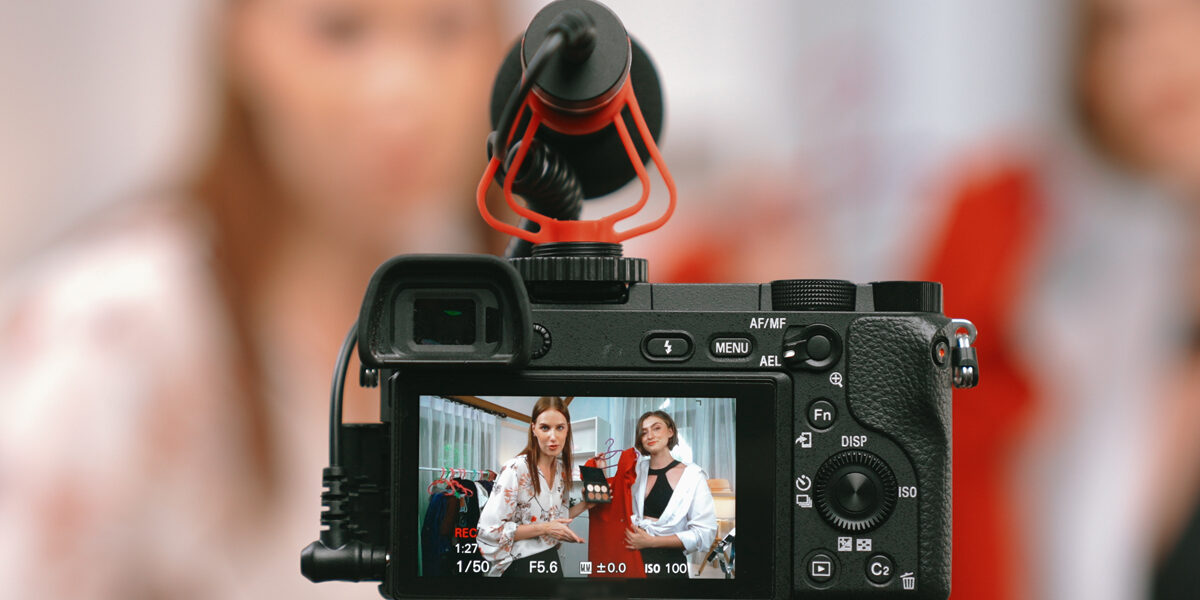
Live streaming has evolved from a novelty into a must-have marketing strategy for businesses of all sizes. It allows brands to directly interact with customers in real time—hosting product launches, Q&A sessions, webinars, or behind-the-scenes tours. By fostering immediate two-way communication, live streaming builds trust, humanizes your brand, and can significantly boost conversions.
This post will guide you through the essentials of live streaming for business: why it’s effective, how to choose the right platform, best practices to keep viewers engaged, and ways to measure your success. Whether you’re a start-up experimenting with new channels or a well-established organization looking to deepen customer relationships, live streaming offers unique opportunities to connect and grow.
1. Why Live Streaming Matters
Authenticity and Trust
Live video is unedited and unscripted (or at least less edited than pre-recorded content), giving viewers a genuine glimpse into your brand. This transparency fosters trust, as audiences see real human interactions rather than polished, highly curated media.
Immediate Engagement
Unlike pre-recorded videos, live streams let you respond to questions and comments on the spot—creating a real-time dialogue. This form of interactive marketing boosts engagement rates and can turn passive viewers into active participants.
Cost-Effective Reach
Platforms like YouTube Live, Facebook Live, Instagram Live, LinkedIn Live, and Twitch offer free live streaming capabilities. You can reach global audiences without significant investment in traditional broadcasting infrastructure.
If you’re developing a broader video strategy, check out Video Marketing 101: Building a High-Converting Video Strategy to lay a strong foundation.
2. Choosing the Right Platform
2.1 Facebook Live
- Audience: Broad demographic, ideal for community-focused brands.
- Key Features: Audience polls, real-time comments, easy mobile streaming.
- Best For: Product announcements, casual Q&A sessions, behind-the-scenes tours.
2.2 Instagram Live
- Audience: Primarily younger demographic; visually-oriented.
- Key Features: Dual live sessions with guests, question stickers, direct integration with IG Stories.
- Best For: Lifestyle brands, influencers, and visually driven campaigns.
2.3 YouTube Live
- Audience: Wide demographic, strong search functionality.
- Key Features: Scheduled events, real-time chat, monetization options.
- Best For: Webinar-style presentations, in-depth tutorials, large-scale live broadcasts.
2.4 LinkedIn Live
- Audience: Professionals and B2B segments.
- Key Features: Thought leadership content, industry-specific discussions, professional networking.
- Best For: Webinars, panel discussions, corporate announcements, industry talks.
2.5 Twitch
- Audience: Gaming community, but increasingly diverse (art, music, events).
- Key Features: Subscription options, live chat, extended broadcast times.
- Best For: Gaming, creative demos, niche community building.

3. Preparing for Your Live Stream
3.1 Define Your Purpose
Clearly outline what you aim to achieve—brand awareness, lead generation, product demonstration, or community building. A focused objective guides the entire production process, from topic selection to promotional strategy.
3.2 Plan Your Content
Though live streaming may appear spontaneous, successful sessions usually follow a structured outline. Include key talking points, product demos, or interview segments to ensure a cohesive flow.
3.3 Technical Setup
- Camera and Audio: A high-quality webcam or smartphone camera can suffice; ensure your microphone captures clear audio.
- Lighting: Natural light or a basic ring light can dramatically improve video quality.
- Internet Connection: A stable broadband or LTE connection is critical to avoid lag or disconnections.
- Backup Plan: If your primary equipment fails, have a secondary device or hotspot ready.
3.4 Promotion and Scheduling
Announce your stream ahead of time on your social channels, newsletters, and website. Encouraging followers to turn on notifications can help you build anticipation and ensure a larger live audience.
Learn more about selecting the right video length and format by reading Short-Form vs. Long-Form Video Content: Which Is Right for Your Brand?
4. Engaging Viewers in Real Time
4.1 Start Strong
Attention spans are short, especially online. Capture interest within the first 10–15 seconds by introducing the topic, greeting your audience, and teasing what they can expect during the live stream.
4.2 Encourage Interaction
Actively invite viewers to comment or ask questions. Use polls, question stickers (on platforms like Instagram), or share user-generated content. Respond to viewer input verbally or via on-screen prompts.
4.3 Incorporate Guest Speakers
Bringing in industry experts, influencers, or customers adds variety and credibility. Guests can share unique perspectives, answer niche questions, and expand your audience by promoting the event to their networks.
4.4 Keep It Conversational
Unlike pre-recorded videos, live streams thrive on authenticity. Maintain a friendly, approachable tone, and don’t be afraid to show a bit of personality or humor. Mistakes and mishaps—when handled gracefully—can humanize your brand.
4.5 Use Visual Aids
If relevant, screen share slides, show product demos, or incorporate on-screen graphics and banners to break up the monotony of a single talking head.

5. Post-Stream Best Practices
5.1 Save and Repurpose Content
Most platforms allow you to save live streams, which you can then edit for future use. Consider creating highlight reels, snippets for social media, or an evergreen tutorial that lives on your website. Repurposing extends the content’s lifecycle and maximizes ROI.
5.2 Gather Feedback
Send a follow-up email or post-stream survey to gather feedback. Ask viewers what they enjoyed, what could be improved, and what topics they’d like to see covered next. This feedback loop refines your future streams.
5.3 Analyze Performance Metrics
Look at view count, watch time, engagement (likes, comments, shares), and conversion data. Many platforms provide built-in analytics for live streams. Correlate these numbers with your initial objectives to see if you met your goals.
5.4 Follow Up with Attendees
If you collected leads or had sign-ups, send personalized thank-you messages with relevant offers or resources. Nurture those prospects with additional content or product demos.
For advice on using AI tools to optimize your post-stream follow-ups, check out AI Tools Every Modern Marketer Should Know.
6. Overcoming Common Live Stream Challenges
6.1 Technical Glitches
Even professional broadcasters face dropped connections or audio issues. Test everything beforehand, and have a backup plan—like a secondary camera or hotspot—ready if things go wrong.
6.2 Low Engagement
If audience interaction is sluggish, prompt viewers with more direct questions or shift topics to spark interest. Sometimes, adjusting your streaming schedule to a more convenient time zone can help too.
6.3 Stage Fright
Speaking live can be daunting. Practice your presentation, keep notes on-hand, and consider co-hosting with a colleague to share the spotlight and reduce anxiety.
6.4 Content Burnout
Going live frequently can strain creative resources. Vary the format—Q&A one week, product demo next, interview another—to keep both you and your audience interested.

7. Real-World Examples
Adobe’s Live Design Sessions
Adobe regularly hosts live streams featuring designers who demonstrate new techniques in Photoshop or Illustrator. These sessions attract creative professionals seeking to learn and engage with Adobe experts in real time.
Shopify’s Virtual Town Halls
Shopify broadcasts town halls for merchants, sharing platform updates and answering user questions. This transparent approach fosters community trust and provides immediate feedback to Shopify’s development teams.
Fitness Brands on Instagram Live
Many fitness trainers and brands leverage Instagram Live for real-time workouts. This format encourages viewer participation—people can follow along, ask questions about form, or request specific routines.
Conclusion
Live streaming is a powerful way to connect with audiences in a format that’s dynamic, authentic, and highly engaging. By selecting the right platform, structuring your content effectively, and encouraging real-time interaction, you can create memorable experiences that deepen customer relationships and drive tangible business outcomes. Remember that success with live streaming often comes down to preparation, authenticity, and consistent iteration based on feedback and analytics.





